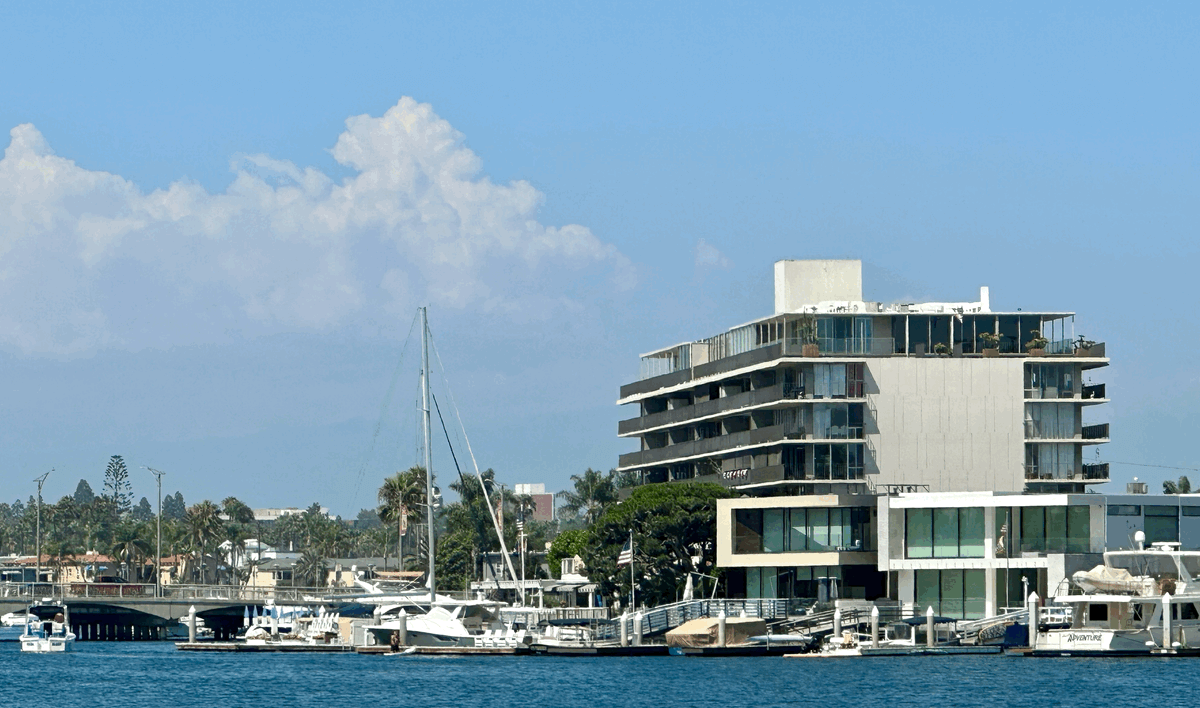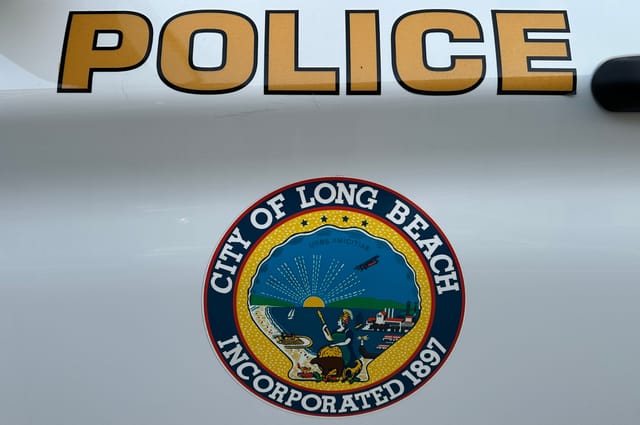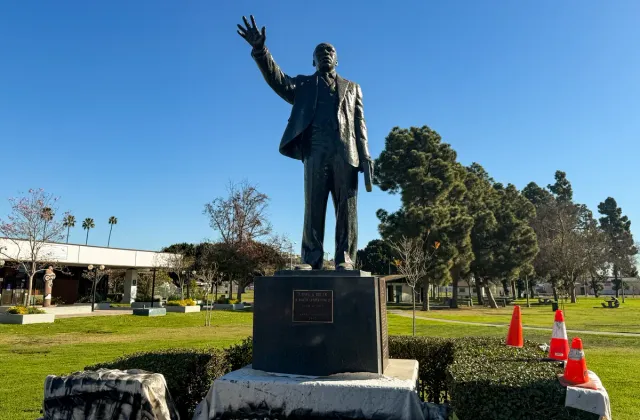Column: Long Beach needs tens of thousands of new homes to address the housing crisis
Here’s where we should put them.

Last week I wrote a column about how other cities are building tens of thousands of new homes to address the housing crisis.
Long Beach has been lagging far behind the production in cities like San Diego and Oakland. Just 635 homes were permitted in 2023, according to housingdata.app. That’s not enough.
At that rate, it would take nearly 40 years to build the roughly 25,000 homes we are required to plan for by 2029.
UC San Diego gets OK to build historic 6,000-bed housing village https://t.co/BrnLOb6FRk pic.twitter.com/nE0EoHVzWU
— The San Diego Union-Tribune (@sdut) July 18, 2024
A post on X (formerly Twitter) from the San Diego Union-Tribune on July 18, 2024.
But if we’re serious about fixing the housing crisis, we should be looking to double that number. To accomplish that our city leaders have to change the rules.
Lots of construction is happening Downtown and the southeast corner of the city near 2nd and PCH, thanks to the Downtown Plan and the Southeast Area Specific Plan.
When city leaders removed restrictive zoning laws in those places, developers rushed to submit plans for thousands of new homes.
It only shows that the biggest obstructions to housing production in the city are limits we’ve placed on ourselves.
Outside of our specific plans, very little is getting built. So let’s draw up more specific plans. Let’s give every neighborhood a new growth plan, tailored to the unique needs of each community – starting with the places that need it the most.
Here's what I've imagined for our city's future.
CSULB
Cal State Long Beach is a 37,000-student university, but many of those students struggle to afford housing in the area. Yet almost all of the residential land around the school strictly prohibits apartments, leaving only million-dollar houses that no student can afford.
The lack of housing on campus or nearby means most students and staff commute, creating a massive traffic jam every morning and evening.
And after a year of faculty strikes and student action pushing for raises and opposing tuition increases, it’s clear that something has to give.
The city and university could help solve both problems by legalizing the dense, student-friendly construction that’s a staple of most college towns.
University-owned developments would provide much-needed student housing and make a LOT of money for the school – which can be used to pay faculty and staff higher wages without raising tuition.
A Cal State Specific Plan could even require the scale and architecture to look something like the USC Village, a rare gem of a tiny college town nestled in South Central LA.
Five thousand new apartments in the neighborhoods would ease the burden on students and staff trying to live near the campus, take hundreds of cars off the roads, and help the university grow.
Long Beach Airport / LBCC
The Long Beach Airport and its surroundings are a massive hub of jobs in the city. Along with new aerospace industry players like Rocket Lab and Relativity Space, Ford has announced plans to open a 250,000-square-foot EV facility on the north side of the airport and an industrial facility twice that size is slated to go up to the west.
Yet, nearly all of the land to the north and east is reserved for low-density, single-unit construction.
To capitalize on these jobs and industries, we should add thousands of apartments nearby, so the scientists, engineers, and other well-paid workers can live in our city instead of elsewhere.
(Don’t worry, the flight path is diagonal from southeast to northwest. I’m not suggesting we build towers in the way of aircraft.)
The Southeast Area Specific Plan would be a perfect template for the area around the airport north of the 405 from Clark Avenue to the San Gabriel River.
Five thousand new homes near these well-paying jobs would attract talented individuals to live and work in Long Beach while easing the burden on other places that are already built out to a greater degree.
And this would be the perfect place for lots of market-rate apartments that require no public subsidy like most affordable projects.
You’d be hard-pressed to find a home selling for less than a million dollars in that area. If you build luxury apartments in rich neighborhoods, you don’t have to worry about gentrification.
Bixby Knolls / Cal Heights / North Wrigley / Los Cerritos
One of the more underrated job centers in Long Beach is centered around the Medical Center, extending north along Atlantic Avenue through Bixby Knolls
Thousands of jobs at medical institutions are within a short walk of a Metro A-Line station but are surrounded by low-density neighborhoods where apartments are strictly prohibited.
In not allowing transit-oriented development here and along the corridor north, the city is limiting options for doctors, nurses, and other medical workers.
Plus, what could be another center of commerce and nightlife in Bixby Knolls is hamstrung by how few people live within easy walking distance, again forcing customers into cars.
There’s currently an effort to rezone a small portion of Bixby Knolls, but it focuses on the commercial corridors and excludes the low-density neighborhoods directly adjacent to Atlantic Avenue.
I wrote about how that’s not only unfair but also won’t get us any closer to fixing the housing crisis.
Let’s follow San Diego's lead and position 5,000 homes around the hospitals creating a dense, walkable city center oriented around our regional transit line.
And although the 405 Freeway currently bisects the area, a dividing chasm that nobody wants to cross on foot and more development in the area would make the case for a freeway lid much stronger — like this one proposed in Hollywood over the 101 Freeway.
BELMONT SHORE / NAPLES
One of the most expensive neighborhoods in Long Beach is Naples Island, where $5 million homes are more common than anything under a million.
Along with the Peninsula and Belmont Shore, however, they are among the most popular destinations in the city, boasting nearly half of the Long Beach coastline and the Alamitos Bay while drawing thousands of people every day and night to the Second Street corridor.
But these neighborhoods prohibit new apartment construction, so people who want to enjoy all their amenities have to travel there from somewhere else — once again, generating lots of car trips in and out of the area.
Instead, we could go back to the islands’ namesake — Napoli, Italy, where city streets flaunt their gorgeous architecture, making this seaside destination one of the most popular tourist attractions in the world.
People in Napoli stroll along the canals, past pastel-colored waterfront buildings where cafes, restaurants and shops are nestled comfortably beneath homes sporting balconies made for enjoying a sunset.
Our canals and waterfront can and should be equally as inviting, enjoyable and accessible as possible, to give more people a chance to live in such a beautiful place.
All it would take is a concerted effort from our city leaders to do what’s right.
It will let more people live in Long Beach, limiting vehicle trips in the city and freeing up parking spaces for those who need to drive.
It will encourage people to ride bikes and take public transit, which in turn will lead to more investments in both.
And it will turn Long Beach into the world-class beachfront destination it was always meant to be, where housing is affordable, businesses thrive, and the rest of California looks to us as the best the state has to offer.
That’s the future that’s possible if our leaders dare to act today.
We need your support.
Subcribe to the Watchdog today.
The Long Beach Watchdog is owned by journalists, and paid for by readers like you. If independent, local reporting like the story you just read is important to you, support our work by becoming a subscriber.





